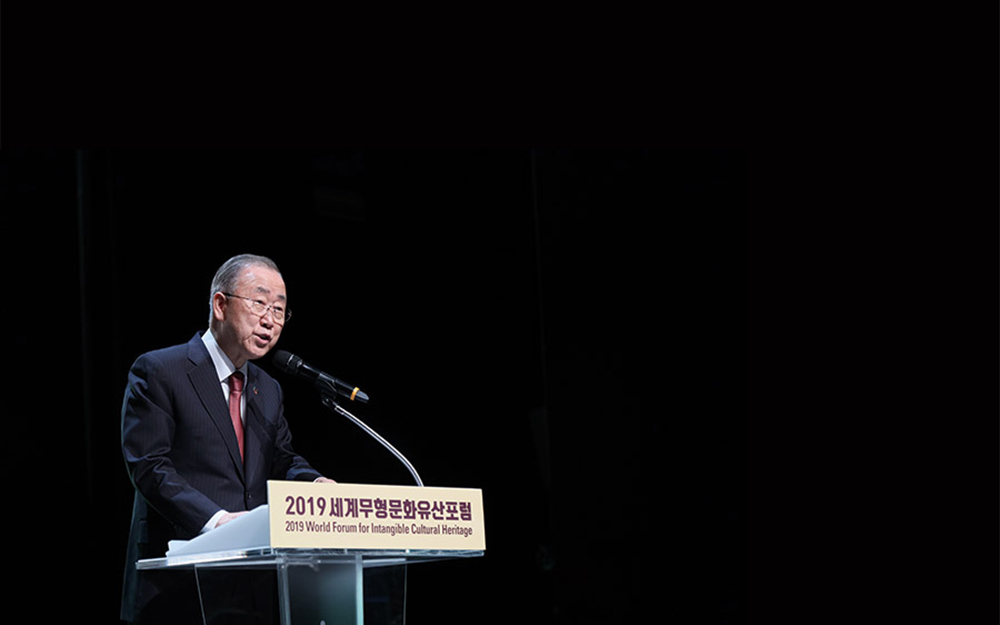Seong-Yong Park
Editor-in-Chief/Assistant Director General, ICHCAP
The tenth anniversary of the ICH Courier is an exciting event as it marks the end of an era and helps us dream of a new chapter and goals ahead. The ICH Courier began as a preliminary project established two years before the official inauguration of ICHCAP.
While there have been changes in the design and format of the ICH Courier over the years, its focus has always been to communicate with the world through ICH. On the tenth anniversary, we want to look back on our history as well as the value and meaning we try to present to our readers. It struck us that this may be more visible through big data,and thus, “The ICH Courier’s Decade in Numbers” was conceived with anticipation and curiosity for the results.
Issues and Trends Discussed and Reflected Over the Years
To the editors’ surprise, the most frequently used keyword over the last ten years in the ICH Courier was “new.” It seems paradoxical that newness was our focus in discussing intangible heritage, which forms traditional culture but also ties in with the age-old saying, “knowing the new through the old.” The ICH Courier discussed new developments in intangible heritage and new fields being integrated into the world of intangible heritage over the past decade.
The Windows to ICH section introduces different elements in each volume, showing how differently a single theme can be expressed in different communities while highlighting a fundamental similarity amidst diversity. Expert Remarks includes new values and trends in the field of intangible heritage through the insight of a professional in the field. Through these two sections, the ICH Courier has established its unique position as a specialist publication in the intangible heritage field while staying fresh in the eyes of its readers.
The second most frequently used keyword was “convention.” The 2003 Convention has been highly influential, bringing a paradigm of change to cultural policies around the world through cooperation with UNESCO. While the Convention provides the framework for intangible heritage policies in the international community we might have to consider whether we have been confining our thoughts to its boundaries here at the ICH Courier. Although the Convention is an international standard for intangible heritage safeguarding, perhaps the ICH Courier should aim toward discovering and discussing more diverse and creative forms of safeguarding in everyday life going forward.
Furthermore, the ICH Courier has contributed to discovering and promoting the activities of diverse ICH communities, keeping with the spirit of the Convention. International society clearly stresses the role of the ICH communities in safeguarding ICH as living culture. Thus the ICH Courier has been introducing the ICH safeguarding activities of various communities around the world, recognizing that the community cannot be separated from intangible heritage, and heritage interacts with the changing environment of the community.
Since the adoption of the 2030 Agenda for Sustainable Development in 2005, the ICH Courier has continued to highlight sustainability in relation to intangible heritage; the most frequently used word in 2016 was “sustainable.” Additionally, with the Convention stressing cooperation in the field of education in 2017, “education” and “capacity building” have become the focus. The most frequently used word in the ICH Courier in 2018 was “education.”In this, we see the efforts made to reflect the latest trends in intangible heritage and international development. One of the major outcomes over the past ten years is that we were able to expand our readership and spread ICH trends and knowledge to 137 countries, which helps build ICH information and networking for the region and globally.
As a channel for UNESCO ICH programs to reach the Asia-Pacific region and the world, the ICH Courier rose up to the challenge to show intangible heritage in more diverse perspectives with a new agenda while introducing intangible heritage under the familiar context of the Convention.








